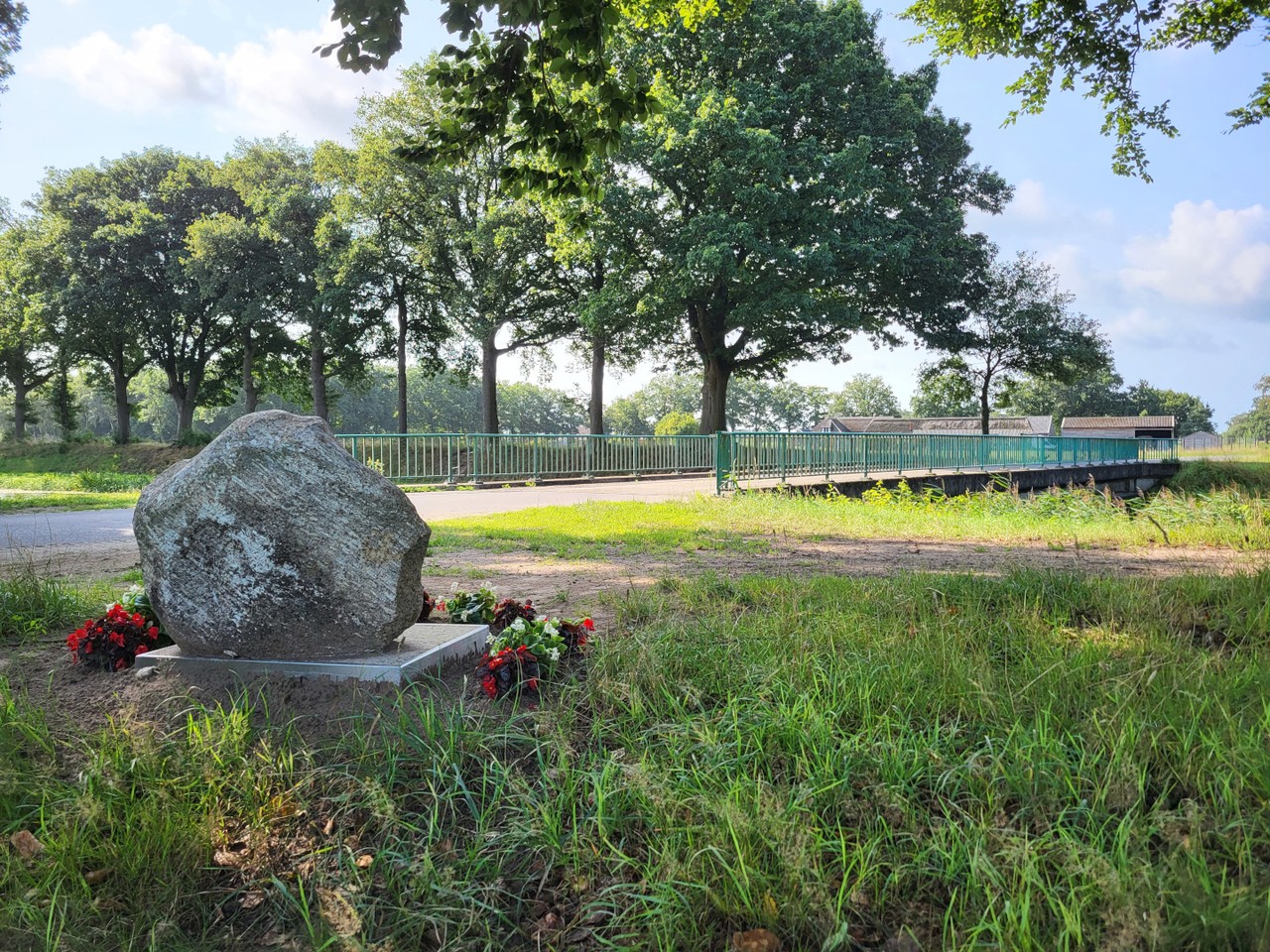Just a few hundred meters from the Sandermans weir over the Schipbeek, resistance member Hans Romp was hiding on the farm of Mr. Pannekoek. On 6 April, he saw a green tracked vehicle approaching from the south. It was not a German army vehicle. He assumed it was a sign that the liberators were near.
German troops had entrenched themselves on the north side of the Schipbeek, near the water’s edge and close to the weir. There was also German artillery positioned nearby. Suddenly, Romp heard a burst of machine-gun fire — the Germans were firing on the approaching Bren carrier, which then turned around and retreated.
This turned out to be the preliminary skirmish for the full-scale crossing of the Schipbeek, planned for the night of 6 to 7 April. Before evening fell, the bridge over the Schipbeek on the Laren-Holten road near the Wippert was destroyed by the Germans. An evacuee in the area recalled:
“Suddenly, just like that, a terrible bang. Windows shattered, clocks fell from the mantelpiece, and the dog began to bark. Then silence. Through the window we saw a large column of smoke near the Wippert. They had blown up the bridge over the Schipbeek.”
Canadian troops, including the South Saskatchewan Regiment, were preparing a few kilometers to the south to cross the stream. About 350 German soldiers of the engineer battalion from the 6th Fallschirmjäger Division were entrenched in foxholes, waiting. The Saskatchewans initially had to delay their planned attack because the assault boats arrived late. But at 3:30 a.m. on Saturday, 7 April 1945, it finally began: Charlie and Delta Companies of the South Saskatchewan Regiment were the first to cross the Schipbeek in five boats. It was a successful assault — the Canadians captured one German officer and 78 NCOs and soldiers. By 3 p.m., the Saskatchewans had taken positions to continue the attack the following day.
Meanwhile, the French-speaking regiment Les Fusiliers Mont-Royal had crossed the river at the Sandermans weir. They were supported by Canadian flamethrowers, which fired directly across the stream into the German foxholes. Some German soldiers were burned alive. Canadian engineers constructed a temporary ferry to transport Allied vehicles across the Schipbeek.
After the successful crossing, the Canadian advance accelerated. Whereas it had taken more than a week to liberate the roughly 10-kilometer stretch between the Twente Canal near Almen and the Schipbeek crossing, Canadian forces advanced an astonishing 80 kilometers in a single day on 10 April — from Holten to Spier in Drenthe.
The fierce German resistance was likely tied to the German military’s strategy to keep the west-east corridor (Amsterdam–Amersfoort–Apeldoorn–Enschede) open as long as possible, in order to transport troops and equipment into Germany to defend the homeland.
